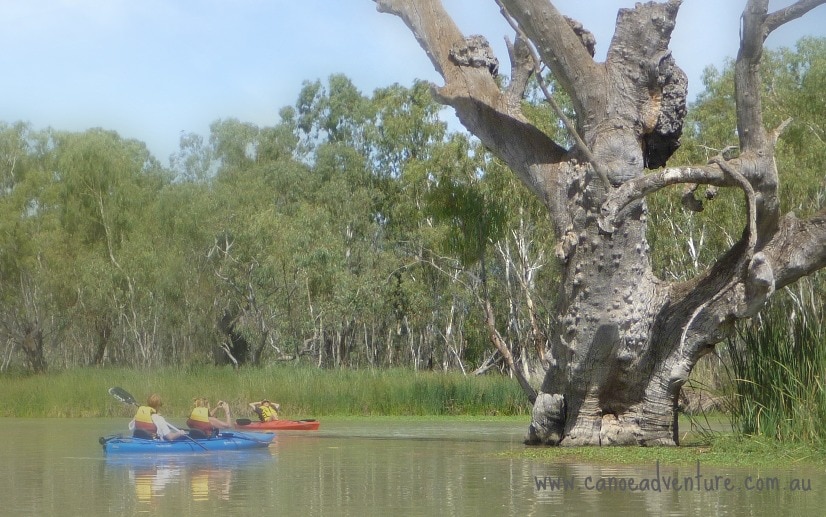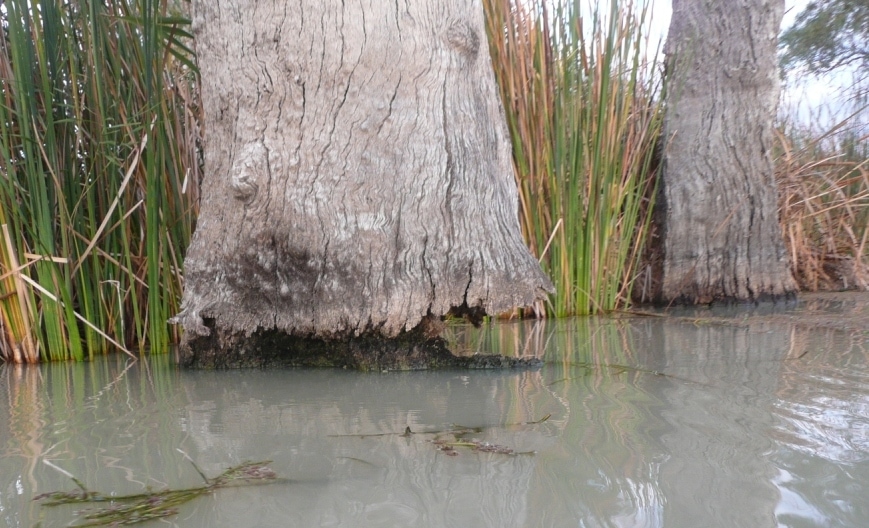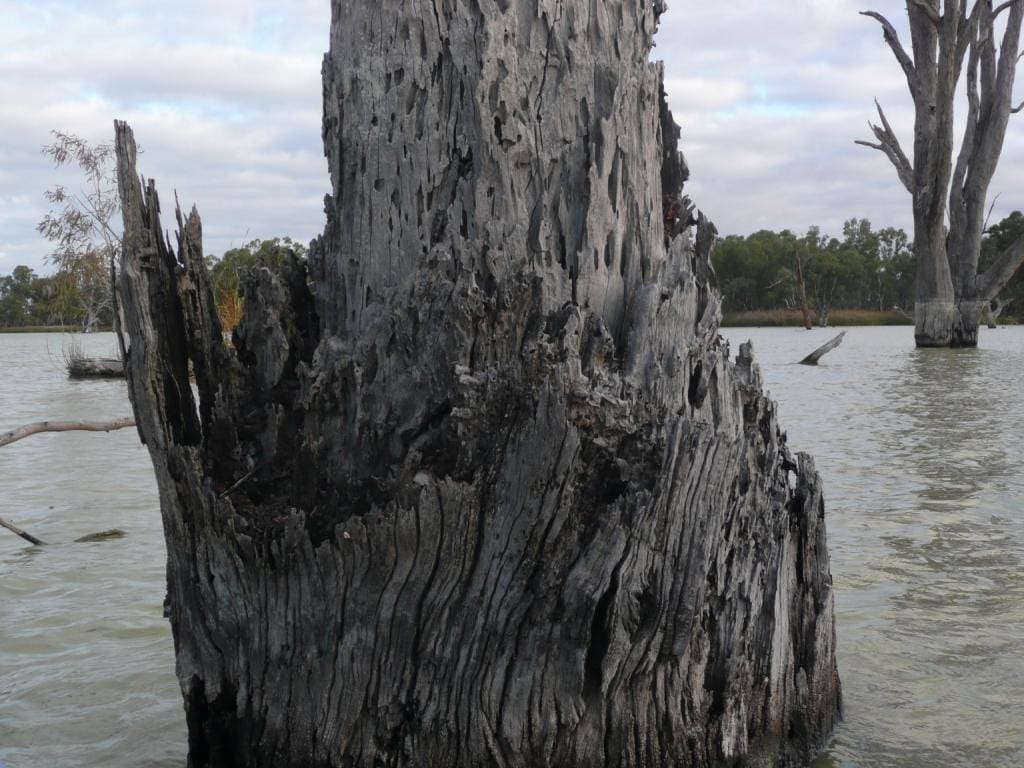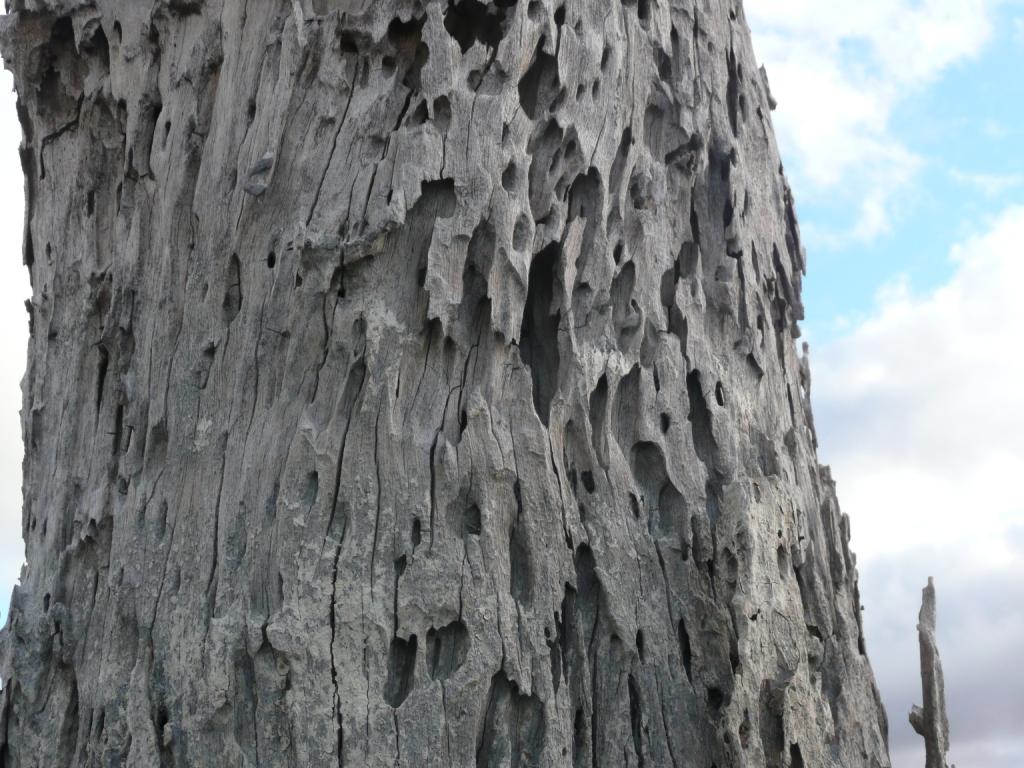The Demise of the Giants?
The stark dead gums lining the edges of many sections of the Murray River and its backwaters, are almost iconic of South Australia’s Murray River. These pale giants certainly enhance the beauty of the river, providing interest, through their wonderful shapes and textures and their height. Their paleness contrasts beautifully with their surroundings and reflects the golds and pinks of dawn and susk, lighting up the scene.
So why are they standing there dead? Regulation of the river (the installation of locks and weirs) has permanently raised the water levels in many areas. The redgums don’t cope with permanent contact with water, and die, but stay standing. Their hardwood takes many many years to decompose. But- decompose they do, especially at the waterline as this photo shows.
Lock 1, at Blanchetown, was completed in 1922, lock 2 in 1928 lock 3 in 1925, lock 4 in 1929, lock 5 in 1927, lock 6 in 1930, and so on, up to lock 10 in Wentworth in 1929, so some of these magnificent dead gums have been standing dead for around 90 years. They can’t stand forever. Time is taking its toll, and so are the white ants. High rivers also like to play argy bargy with these giants, and sometimes win.
So, enjoy them! Delight in the textures! Photograph their start beauty! Admire the curves and lines of their dramatic shape! Point them out to your friends, children and grandchildren!
Because, maybe, in a few generations, there won’t be many of them there to enjoy.
(There’s an interesting summary of the history and function of the locks and weirs here http://www.murrayriver.com.au/about-the-murray/locks-weirs-dams-barrages#history)



